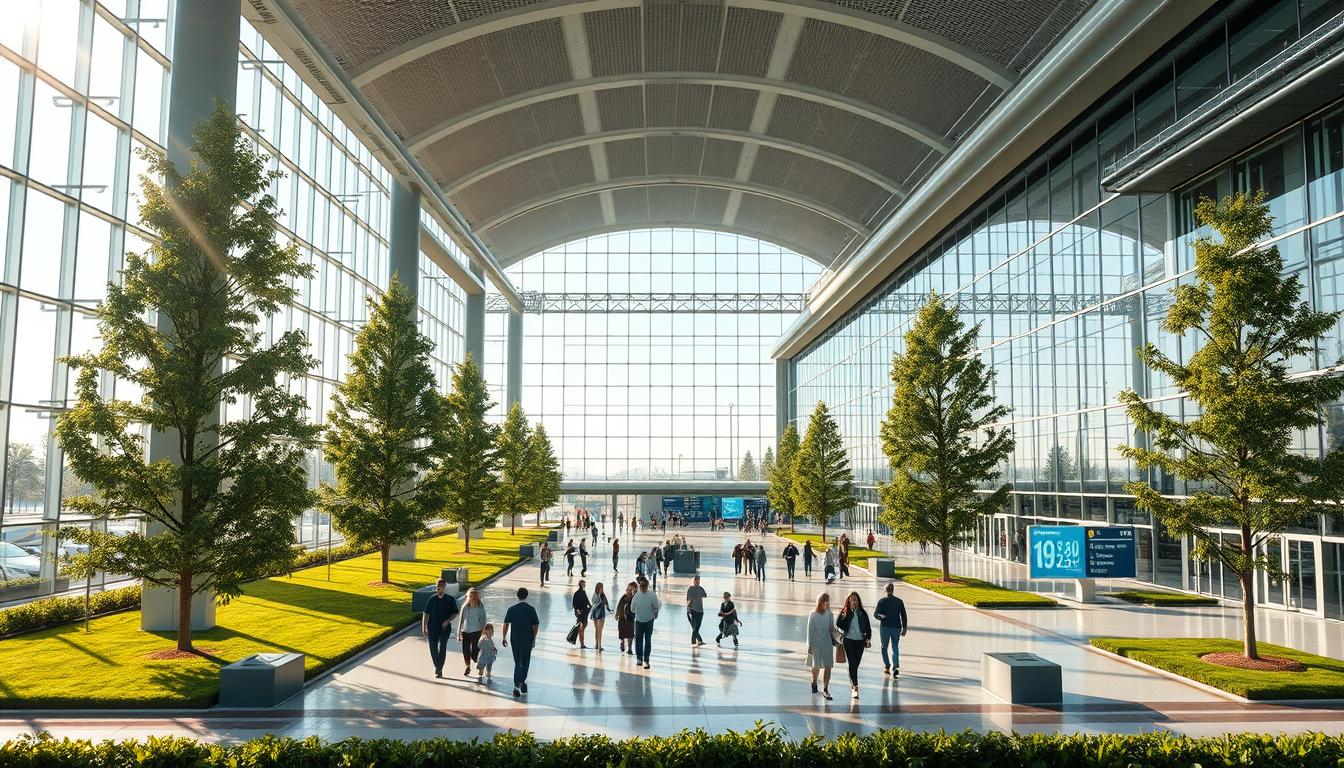Introduction
In an era where climate change, resource depletion, and environmental degradation are pressing global concerns, sustainable architecture has emerged as a pivotal solution to mitigate these challenges. Architects and urban planners are now focusing on designing eco-friendly, energy-efficient, and resource-conscious buildings that reduce the environmental footprint while ensuring functionality and aesthetic appeal.
Why Sustainable Architecture is Crucial
- Environmental Impact: Traditional construction methods contribute significantly to carbon emissions, resource depletion, and waste generation. Sustainable architecture aims to minimize these impacts by using energy-efficient materials and practices.
- Resource Conservation: With natural resources like water and energy becoming scarce, sustainable designs focus on conservation through rainwater harvesting, solar energy, and efficient waste management systems.
- Health and Well-being: Green buildings promote better indoor air quality and natural lighting, which enhance the health and well-being of occupants.
1. What is Sustainable Architecture?
Sustainable architecture refers to the practice of designing and constructing buildings that minimize environmental impact while maximizing efficiency in energy, water, and material usage. It involves using renewable energy sources, eco-friendly materials, smart technologies, and passive design techniques to create buildings that are environmentally responsible and economically viable.
The main goal of sustainable architecture is to achieve a balance between modern construction needs and environmental sustainability without compromising on functionality or comfort.
2. Key Principles of Sustainable Architecture
1. Energy Efficiency
One of the core aspects of sustainable architecture is reducing energy consumption. This can be achieved through:
- Passive solar design – Optimizing building orientation to maximize natural light and ventilation.
- Insulation and thermal mass – Using high-quality insulation materials to maintain indoor temperature.
- Renewable energy sources – Installing solar panels, wind turbines, and geothermal heating systems to reduce dependency on non-renewable energy.
- Read Also Noida International Airport Jewar: Your Guide to the New Gateway
2. Water Conservation
Water scarcity is a growing global concern, making efficient water management a key feature of sustainable buildings. Techniques include:
- Rainwater harvesting systems to collect and store water for reuse.
- Low-flow fixtures and water-efficient appliances.
- Greywater recycling systems for landscaping and flushing toilets.
3. Sustainable Building Materials
Using environmentally friendly materials minimizes resource depletion and pollution. Common sustainable materials include:
- Bamboo – A rapidly renewable resource.
- Recycled metal and glass – Reduces industrial waste.
- Reclaimed wood – Prevents deforestation.
- Low-VOC (volatile organic compounds) paints – Improves indoor air quality.
4. Waste Reduction & Recycling
Sustainable architecture promotes the concept of a circular economy, where materials are reused and recycled. This includes:
- Construction waste management plans.
- Adaptive reuse of old buildings instead of demolition.
- Using modular and prefabricated structures to minimize material wastage.
5. Indoor Air Quality & Health
Sustainable buildings focus on creating healthy indoor environments by:
- Enhancing natural ventilation and daylighting.
- Using non-toxic, chemical-free materials.
- Integrating green spaces like rooftop gardens.
Read Also Best Places To Buy Rental Property In 2025 For Investors
3. Benefits of Sustainable Architecture
1. Environmental Benefits
- Reduces carbon footprint by minimizing greenhouse gas emissions.
- Conserves natural resources through efficient energy and water use.
- Promotes biodiversity by incorporating green landscapes into urban areas.
2. Economic Advantages
- Lower energy and water bills due to energy-efficient systems.
- Higher property value for eco-friendly buildings.
- Reduced maintenance costs with durable, sustainable materials.
3. Health & Well-being
- Improved indoor air quality enhances occupant health.
- Natural lighting and ventilation boost productivity and mental well-being.
- Biophilic design elements create a calming and stress-free environment.
4. Challenges in Implementing Sustainable Architecture
1. High Initial Costs
- Sustainable buildings often require higher upfront investment in technology and materials.
2. Limited Awareness & Expertise
- Many architects and builders still lack knowledge and training in sustainable practices.
3. Regulatory Barriers
- Building codes and policies may not support green building techniques, making implementation difficult.
4. Maintenance & Performance Monitoring
- Regular monitoring of green technologies is essential to ensure efficiency.
5. Future Trends in Sustainable Architecture
1. Smart Building Technologies
- AI-driven energy management systems to optimize power usage.
- Smart sensors for real-time monitoring of indoor air quality and lighting control.
2. Net-Zero Energy Buildings (NZEBs)
- Buildings that generate as much energy as they consume using renewable sources.
3. Biophilic & Nature-Integrated Designs
- More vertical gardens, green roofs, and natural elements in architecture.
4. 3D Printing & Prefabrication
- Eco-friendly 3D printing materials to construct sustainable homes quickly and affordably.
6. Frequently Asked Questions (FAQs)
1. What is the main goal of sustainable architecture?
The primary goal is to reduce environmental impact while creating energy-efficient, resource-conscious, and comfortable living spaces.
2. What are the best materials for sustainable buildings?
Bamboo, recycled metal, reclaimed wood, low-VOC paints, and green concrete are some of the best materials for sustainable construction.
3. How do sustainable buildings save energy?
They incorporate solar panels, passive cooling and heating, smart lighting systems, and high-quality insulation to reduce energy consumption.
4. Are sustainable buildings expensive?
While initial costs may be higher, long-term savings on energy and maintenance make them a cost-effective investment.
5. How can homeowners make their houses more sustainable?
- Install solar panels.
- Use energy-efficient appliances.
- Harvest rainwater.
- Incorporate green roofs and walls.
6. What is the future of sustainable architecture?
The future includes smart homes, 3D-printed structures, AI-driven energy optimization, and completely net-zero buildings.
7. Can existing buildings be retrofitted for sustainability?
Yes, by upgrading insulation, lighting, HVAC systems, and incorporating renewable energy solutions.
8. What is a zero-carbon building?
A zero-carbon building produces no carbon emissions by relying entirely on renewable energy sources.
9. How does sustainable architecture help fight climate change?
By reducing energy consumption, carbon footprint, and environmental degradation, it contributes to a greener planet.
10. What are some examples of famous sustainable buildings?
- The Edge (Amsterdam) – One of the most energy-efficient office buildings.
- Bullitt Center (Seattle, USA) – A self-sustaining, net-zero energy building.
- Bosco Verticale (Italy) – A green tower with integrated vegetation.
Conclusion
Sustainable architecture is no longer just an option—it is a necessity for a better, greener, and healthier future. By incorporating smart technologies, eco-friendly materials, and energy-efficient designs, we can create buildings that meet modern needs while protecting our planet.
As individuals, businesses, and governments embrace sustainable practices, the future of architecture will be defined by innovation, resilience, and environmental responsibility.







